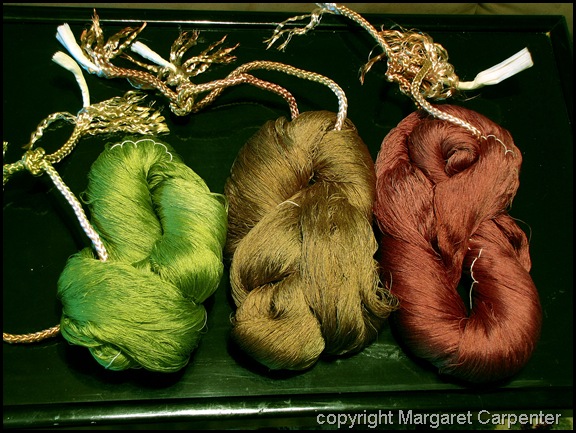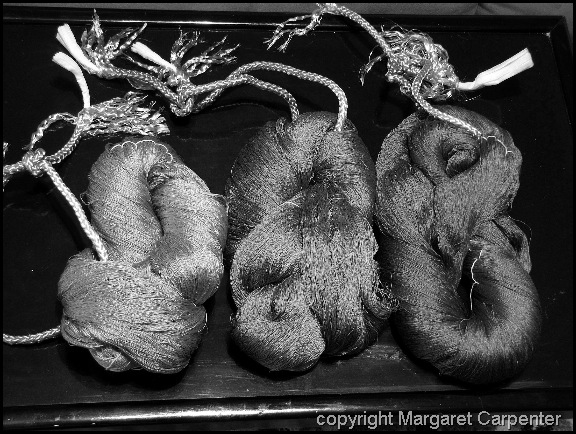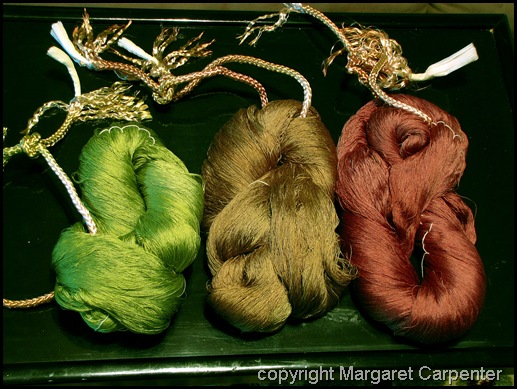Posted by Peg in South Carolina
DONE WITH SLEYING THE REED
I have finished sleying the reed. I found another doubled warp end. That was a real surprise, since this is the second time I sleyed this part of the warp. Clearly didn’t catch it the first time. So the front beam is back on and I am ready to get to work I need to do before attaching the warp to the front rod.
WINDING SKEINS ONTO CONES
Now it’s time for a change of pace and turning to winding the 120/2 skeins I dyed earlier onto cones. I approach this with fear and trepidation. After setting up the apparatus, I carefully put the warp onto the skein winder, making sure that the knots on the ties all faced the same direction. I found the two ends, separated them and tied bits of white yarn to the ends of both so that they could be easily found. I removed the skein ties. Then I determined which of the two ends would wind off the top. I got the right end attached to the cone winder and started winding, gleeful at how good I have gotten in dealing with these silk skeins.
THEN AN END BROKE
Sigh. Of course it got buried somewhere in the midst of the skein. It would be easier to find a lost end on a spinning wheel than to find this end.
I tied a couple of ties around the skein, removed it and turned it inside out. The last time I did this I had not put the ties in. I decided that not putting a couple of ties on was quite foolish. Anyway, I had to do turn the skein inside out because that would make it possible to unwind from the other end with it working across the top of the skein instead of the underside. I’m back winding the cone again.
And I am very nervous.
I am going to be very careful, because if this end breaks I am in serious, serious trouble.
And no, I do not know why the first end broke. In the process of unwinding I have seen one knot. I hope this yarn is not tender and easily breakable……….
Related Posts:
Winding Commercial Silk Skeins onto Cones
More on Winding Fine Silk onto Cones
“Winding 120/2 Dyed Silk onto Cones” was written by Margaret Carpenter for Talking about Weaving and was originally posted on July 21, 2010. ©2010 Margaret Carpenter aka Peg in South Carolina.






